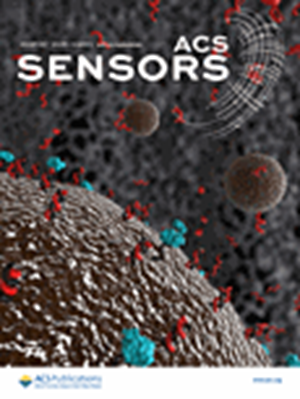Extracting True Virus SERS Spectra and Augmenting Data for Improved Virus Classification and Quantification
IF 8.2
1区 化学
Q1 CHEMISTRY, ANALYTICAL
引用次数: 0
Abstract
Surface-enhanced Raman spectroscopy (SERS) is a transformative tool for infectious disease diagnostics, offering rapid and sensitive species identification. However, background spectra in biological samples complicate analyte peak detection, increase the limit of detection, and hinder data augmentation. To address these challenges, we developed a deep learning framework utilizing dual neural networks to extract true virus SERS spectra and estimate concentration coefficients in water for 12 different respiratory viruses. The extracted spectra showed a high similarity to those obtained at the highest viral concentration, validating their accuracy. Using these spectra and the derived concentration coefficients, we augmented spectral data sets across varying virus concentrations in water. XGBoost models trained on these augmented data sets achieved overall classification and concentration prediction accuracy of 92.3% with a coefficient of determination (R2) > 0.95. Additionally, the extracted spectra and coefficients were used to augment data sets in saliva backgrounds. When tested against real virus-in-saliva spectra, the augmented spectra-trained XGBoost models achieved 91.9% accuracy in classification and concentration prediction with R2 > 0.9, demonstrating the robustness of the approach. By delivering clean and uncontaminated spectra, this methodology can significantly improve species identification, differentiation, and quantification and advance SERS-based detection and diagnostics.

提取真病毒SERS谱和增强数据以改进病毒分类和量化
表面增强拉曼光谱(SERS)是传染病诊断的变革性工具,提供快速和敏感的物种鉴定。然而,生物样品中的背景光谱使分析物峰检测复杂化,增加了检测限,阻碍了数据的增强。为了解决这些挑战,我们开发了一个深度学习框架,利用双神经网络提取真正的病毒SERS谱,并估计12种不同呼吸道病毒在水中的浓度系数。提取的光谱与在最高病毒浓度下获得的光谱高度相似,验证了其准确性。利用这些光谱和衍生的浓度系数,我们增强了水中不同病毒浓度的光谱数据集。在这些增强数据集上训练的XGBoost模型总体分类和浓度预测准确率为92.3%,决定系数(R2) >;0.95. 此外,提取的光谱和系数用于增强唾液背景中的数据集。经实际唾液病毒谱测试,增强谱训练的XGBoost模型在分类和浓度预测方面准确率达到91.9%,R2 >;0.9,证明了该方法的稳健性。通过提供干净无污染的光谱,该方法可以显著提高物种鉴定、分化和定量,并推进基于sers的检测和诊断。
本文章由计算机程序翻译,如有差异,请以英文原文为准。
求助全文
约1分钟内获得全文
求助全文
来源期刊

ACS Sensors
Chemical Engineering-Bioengineering
CiteScore
14.50
自引率
3.40%
发文量
372
期刊介绍:
ACS Sensors is a peer-reviewed research journal that focuses on the dissemination of new and original knowledge in the field of sensor science, particularly those that selectively sense chemical or biological species or processes. The journal covers a broad range of topics, including but not limited to biosensors, chemical sensors, gas sensors, intracellular sensors, single molecule sensors, cell chips, and microfluidic devices. It aims to publish articles that address conceptual advances in sensing technology applicable to various types of analytes or application papers that report on the use of existing sensing concepts in new ways or for new analytes.
 求助内容:
求助内容: 应助结果提醒方式:
应助结果提醒方式:


